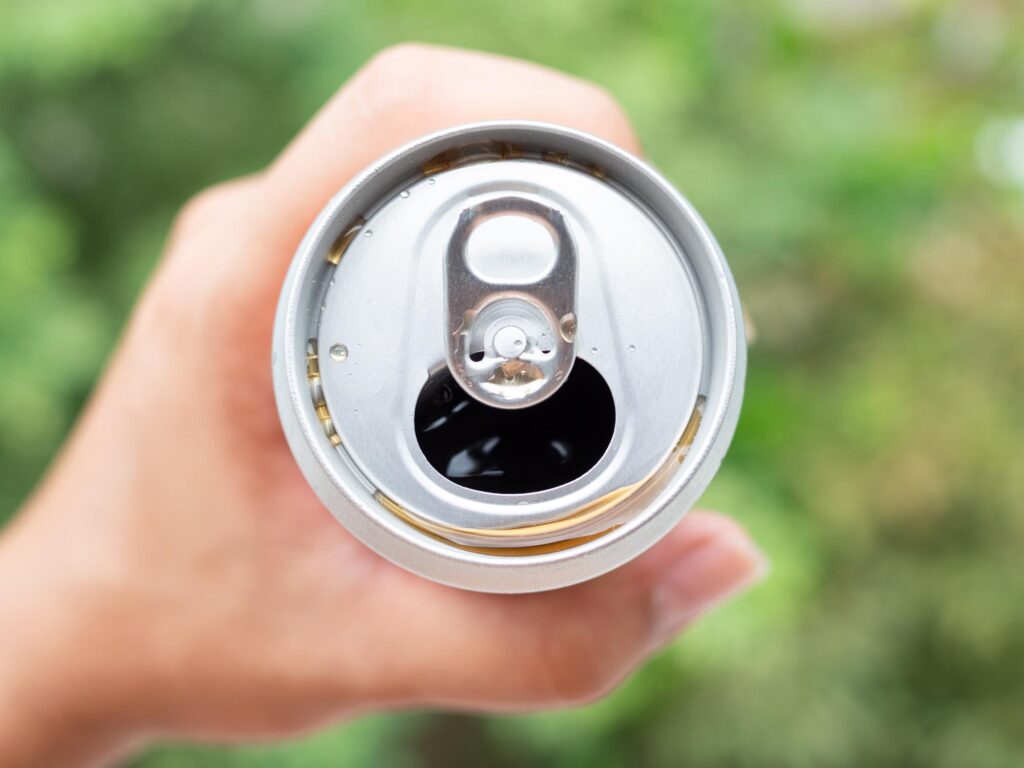A new wellness trend has caught the attention of many seeking natural alternatives for various health concerns – the kratom drink. Made from the leaves of Mitragyna speciosa, a tropical tree native to Southeast Asia, kratom drinks have gained significant popularity in recent years.
These beverages come in various forms, from traditional teas to modern smoothie blends. While some users report positive experiences with pain management and mood enhancement, it’s crucial to understand both the potential benefits and risks associated with kratom consumption.
This article explores essential aspects of kratom drinks:
- The science behind their effects
- Different preparation methods
- Legal status across the globe
- Potential health impacts
- Safety considerations
As interest in kratom drinks continues to grow, questions about their safety and effectiveness have emerged. Whether you’re curious about this trending substance or seeking information for informed decision-making, understanding the complete picture of kratom drinks is essential for your wellbeing.
Understanding Kratom Drinks
A kratom drink is a beverage made from the leaves of the Mitragyna speciosa tree, native to Southeast Asia. These drinks combine kratom powder or crushed leaves with various liquids to create a consumable form of this traditional herb.
Popular Preparation Methods:
- Traditional Tea: Brewing dried kratom leaves or powder in hot water
- Smoothies: Blending kratom powder with fruits, yogurt, or protein shakes
- Cold Brew: Steeping kratom in cold water for 12-24 hours
- Mixed Beverages: Adding kratom to coffee, juice, or other flavored drinks
The taste of kratom can be bitter and earthy, leading many users to add sweeteners or flavor enhancers like honey, lemon, or ginger to make it more palatable.
Alternative Consumption Forms:
- Capsules filled with kratom powder
- Raw powder mixed with water (known as “toss and wash”)
- Concentrated liquid extracts
- Tablets or compressed powder forms
The strength and effects of kratom drinks vary based on:
- Preparation method
- Strain of kratom used
- Amount of powder or leaves
- Additional ingredients mixed in
- Storage conditions and freshness of the product
The Active Compounds in Kratom Drinks: Mitragynine and 7-Hydroxymitragynine
The power behind kratom drinks lies in two key compounds that give this botanical beverage its distinct effects. These natural alkaloids – mitragynine and 7-hydroxymitragynine – work together to create kratom’s unique properties.
Mitragynine
- Makes up about 66% of kratom’s active compounds
- Binds to mu-opioid receptors in the brain
- Creates mild stimulant effects at lower doses
- Produces pain-relieving properties at higher doses
7-hydroxymitragynine
- Present in smaller amounts (about 2% of alkaloid content)
- Much more potent than mitragynine
- Primarily responsible for kratom’s pain-relieving effects
- Creates stronger binding to opioid receptors
These compounds interact with the brain’s opioid receptors in a unique way. Unlike traditional opioids, they act as partial agonists, meaning they don’t fully activate these receptors. This partial activation creates a ceiling effect that may limit both the potential benefits and risks.
The interaction between these compounds and brain receptors can trigger various responses:
- Release of dopamine
- Reduction in pain signaling
- Changes in mood and energy levels
- Altered perception of discomfort
The concentration of these compounds varies depending on:
- The strain of kratom used
- Growing conditions
- Harvest timing
- Preparation method
Effects of Consuming Kratom Drinks: Mood Enhancement, Pain Relief, and More
Kratom drinks produce varying effects depending on the dosage consumed.
Lower Doses (1-5 Grams)
At lower doses, users often report:
- Increased energy and focus
- Enhanced mood and sociability
- Mild pain relief
- Reduced anxiety
Higher Doses (5-15 Grams)
Higher doses typically create different experiences:
- Strong pain-relieving properties
- Deep relaxation
- Sedation
- Euphoric sensations
The intensity and duration of these effects can vary significantly from person to person. Key factors affecting individual responses include:
- Body weight and metabolism
- Personal tolerance levels
- Empty vs. full stomach
- Quality and strain of kratom used
- Pre-existing health conditions
Some users report positive effects lasting 2-5 hours, with peak intensity occurring within 30 minutes to 1 hour after consumption. The strain choice plays a crucial role – red vein varieties tend to produce stronger pain-relieving and sedating effects, while white vein strains are associated with increased energy and focus.
Many people turn to kratom drinks as an alternative for managing chronic pain conditions or seeking natural mood enhancement. The dosage sweet spot differs for each individual, making it essential to start with minimal amounts and carefully observe personal responses.
The Legal Landscape of Kratom Drinks: A Global Perspective
The legal status of kratom drinks varies significantly across the globe, creating a complex patchwork of regulations and restrictions.
United States
- Legal in most states
- Banned in 6 states: Alabama, Arkansas, Indiana, Rhode Island, Vermont, Wisconsin
- Some cities and counties have local bans
- FDA hasn’t approved kratom for medical use
Asia
- Thailand: Legal since 2021 (previously banned)
- Malaysia: Strict regulations on cultivation and sale
- Indonesia: Plans to ban exports by 2024
- Myanmar: Illegal
- Vietnam: Legal but regulated
Europe
Banned in:
- United Kingdom
- Ireland
- Denmark
- Latvia
- Lithuania
- Poland
- Romania
- Sweden
Australia and New Zealand
Classified as a controlled substance
Import and sale prohibited
The legal landscape continues to shift as new research emerges and governments reassess their stance on kratom drinks. Some countries maintain strict prohibitions, while others opt for regulated markets. These varying approaches reflect different cultural attitudes and public health considerations surrounding kratom use.
Law enforcement agencies actively monitor kratom drink distribution in restricted areas, with penalties ranging from fines to imprisonment depending on the jurisdiction.
Understanding the Risks: Side Effects and Dependence Issues with Kratom Drinks
Kratom drinks can trigger both mild and severe side effects that users should carefully consider. Many people experience common physical reactions within hours of consumption:
- Nausea and vomiting
- Dizziness and drowsiness
- Dry mouth and constipation
- Increased urination
- Changes in appetite
- Sleep problems
Long-term kratom use raises concerns about more serious health complications:
Severe Health Risks:
- Liver damage and potential failure
- Seizures and hallucinations
- Breathing difficulties
- High blood pressure
- Mental health issues including anxiety and depression
The risk of physical dependence becomes significant with regular kratom drink consumption. Users often report withdrawal symptoms when attempting to stop:
- Muscle aches and tremors
- Aggressive behavior
- Emotional changes
- Runny nose
- Hot flashes and fever
The intensity of side effects varies based on factors like:
- Individual body chemistry
- Dosage amount
- Frequency of use
- Quality of kratom source
- Existing health conditions
Research suggests that combining kratom drinks with other substances can amplify these risks and create dangerous drug interactions. The DEA has identified multiple cases where kratom contributed to severe medical emergencies and fatalities.
Consultation with Healthcare Professionals: Why It Matters Before Trying Kratom Drinks
Starting kratom drinks requires careful consideration and professional guidance. A healthcare provider can:
- Evaluate your medical history
- Review current medications
- Assess potential risks based on your health conditions
- Create a personalized safety plan
Critical medication interactions can occur between kratom drinks and:
- Prescription pain medications
- Anti-anxiety drugs
- Blood pressure medications
- Antidepressants
- Sleep aids
Your healthcare provider needs to know about any substances you’re considering, including kratom drinks. They can spot red flags like:
- Pre-existing liver conditions
- Mental health concerns
- History of substance use
- Pregnancy or nursing status
A medical consultation helps identify safer alternatives for your specific needs. Your doctor might suggest evidence-based treatments or FDA-approved medications instead of kratom drinks.
Questions to ask your healthcare provider:
- Are there potential interactions with my current medications?
- What warning signs should I watch for?
- What alternatives might work better for my situation?
- How often should I schedule follow-up appointments?
Remember: Self-diagnosing and self-treating with kratom drinks can mask underlying health issues that need proper medical attention.
Making Informed Choices About Kratom Drinks
The decision to use kratom drinks carries significant weight. Understanding both the potential benefits and risks helps create a foundation for responsible use. Here’s what mindful kratom consumption looks like:
- Research verified vendors and product quality
- Start with minimal doses to gauge personal reactions
- Document any effects or side effects experienced
- Maintain open communication with healthcare providers
- Stay updated on changing regulations and research
Knowledge empowers better choices about kratom drinks. The growing popularity of these beverages doesn’t diminish the need for careful consideration of personal health factors and potential risks. Safe use requires ongoing awareness, regular medical oversight, and respect for individual body responses to this substance.
Seeking Help for Substance Use or Mental Health Issues?
Your journey to wellness starts with a single step. At Pacific Breeze Recovery, we understand the complexities of substance use and mental health challenges, including concerns about kratom drink consumption. Our dedicated team offers:
- Personalized treatment plans
- Medical and clinical expertise
- Holistic healing approaches
- Comprehensive mental health support
- Substance use recovery programs
Located in Southern California, our treatment center provides a safe, nurturing environment for your recovery journey. Whether you’re seeking help with kratom use or need support for other substance use or mental health concerns, we’re here to help.
Ready to take the first step? Contact us and explore our website to learn more about our programs and start your path to recovery today.




